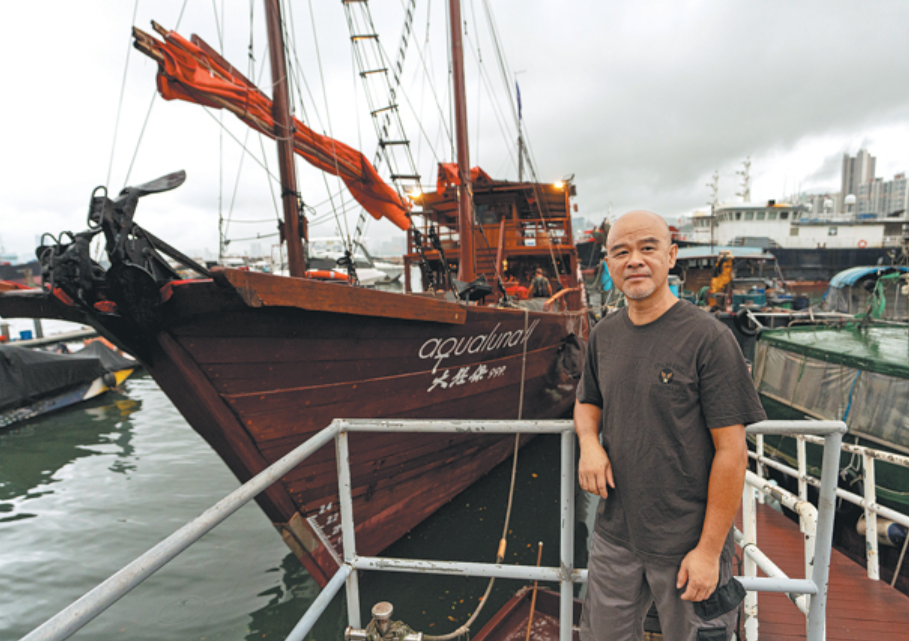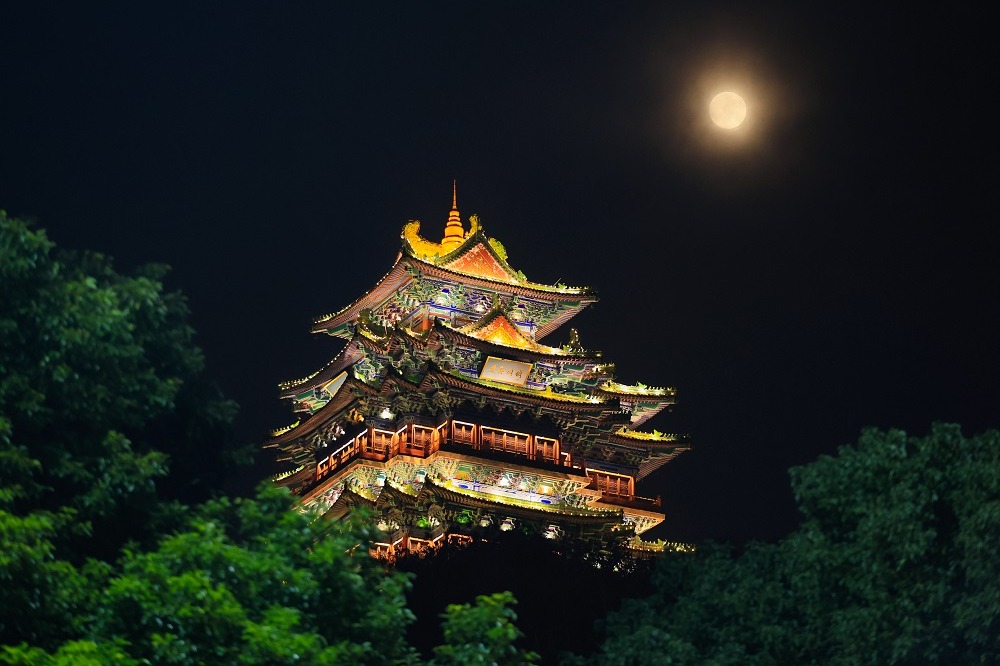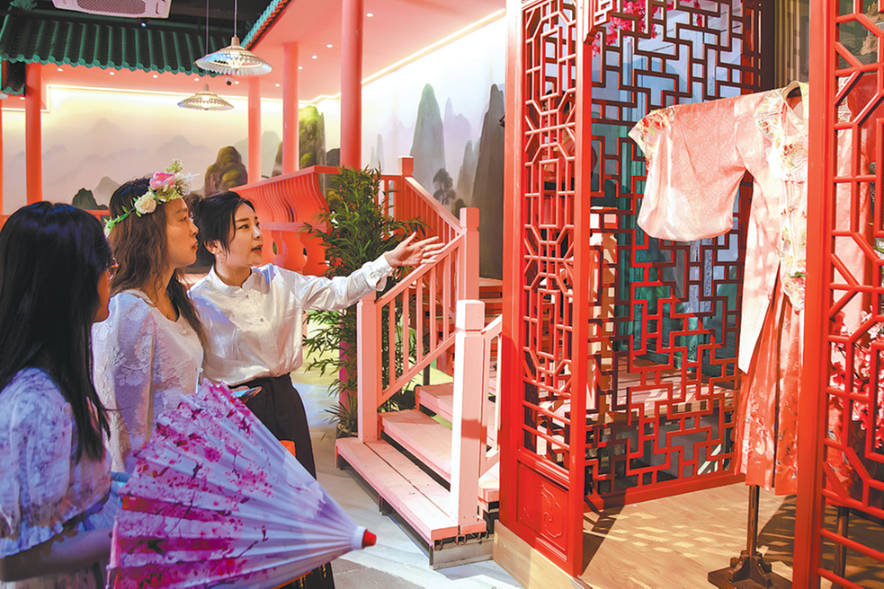Handcrafted red-sail junk glides across a timeless harbor


HONG KONG — As the sun sets over Victoria Harbour, Hong Kong's iconic skyline glows with golden light. Skyscrapers shimmer along the shore as a vibrant red Chinese wooden junk glides gracefully across the water, leaving an image etched in the memory of countless visitors.
"Stepping onto this slow-moving junk amid Hong Kong's high-rises is like experiencing a harmonious blend of modern allure and traditional charm," says Gu Jianing, a tourist from Shanghai, watching as the Cheung Po Tsai, or the Aqua Luna I, cut through the waves.
The junk, an iconic sight in Hong Kong, with its towering wooden frame and three vivid red sails gleaming in the sunlight of Victoria Harbour, has become one of the city's most recognizable symbols.
Featured on postcards, vintage travel posters, T-shirts and ceramics, and even serving as the logo of the Hong Kong Tourism Board, it encapsulates the unique character of the city.
Every day, it ferries visitors across the harbor multiple times, offering a tangible connection to Hong Kong's distinct charm and maritime heritage.
The Aqua Luna junk boat is a painstakingly handcrafted creation by Au Sai-kit, the third-generation owner of Hong Kong's Kwong Ming Shipyard, and his father. Tucked away in A Kung Ngam, Shau Kei Wan in the Eastern District of Hong Kong Island, the shipyard is a two-story tin-roofed building with a green sign reading "Kwong Ming Shipyard". Its dimly lit first floor, filled with wood and tools, leads to a small outdoor pier where the Aqua Luna, usually plying the waters of Victoria Harbour, was moored for routine maintenance on the day of the interview.
Au opened a delicate wooden box for reporters and carefully unfurled a roll of parchment paper: the original blueprint for the Aqua Luna, marked with precise numbers and diagrams.
The Aqua Luna was born in 2006, at a crucial juncture for the shipyard, which was then grappling with declining orders. "A client approached us through a contact, wanting a commercial junk — one so complex that few in the industry dared to take on the project," Au recalls. Even he and his father, both seasoned craftsmen, hesitated when they saw the design.
With three tall masts and billowing sails, the Aqua Luna was unlike any commercial vessel they had ever built. Au explained that wooden junks are more stable in rough seas and stay cooler in summer compared to steel or fiberglass ships. However, crafting them requires extreme precision. "A 0.5-centimeter error could cause planks to misalign or, worse, lead to leaks," he says.
"It was the largest commercial junk I'd ever built," Au notes. Motivated by the thought "better to try than close down", they spent nine months constructing it. What began as a last-ditch effort to save the shipyard has now become Au's source of pride. "Watching this iconic Chinese junk carry tourists from around the world to explore Hong Kong fills me with a deep sense of pride," he says.
Hong Kong, surrounded by the sea, grew into a major Asian trading hub, and the bustling waters of Victoria Harbour once sustained a thriving shipbuilding industry.
Kwong Ming Shipyard was established in the 1950s by Au's maternal grandfather and later taken over by his father, Au Wai. Au Sai-kit himself started learning the trade at 13, apprenticing through experience rather than formal lessons.
"I once tried to cut corners on a complex step, only to have to start all over again," Au says. "Building ships is like life: you have to proceed step by step."
The 1980s were the shipyard's heyday. "We had six to seven in-house staff and 30 to 40 hired workers to handle orders," he recalls. The shipyard built 50-60 percent of Hong Kong's commercial vessels, transporting tourists, residents and workers, including the shuttle boats for the renowned Jumbo Kingdom, one of the world's largest floating restaurants.
But fortunes shifted. As lighter ships gained popularity, traditional handcrafted wooden junks, burdened by high material costs, slowly disappeared. The three-generation-old shipyard shifted its focus from building ships to repairing them and cleaning hulls.
Now in his 60s, Au is among Hong Kong's younger master shipbuilders. Crafting a luxury junk, he says, is a labor of love, but "I'll keep going for as long as I can". In recent years, groups have visited the yard, and Au has shared stories of Chinese junk-making, hoping to kindle young people's interest in this traditional craft.
Leading reporters to the shipyard's second floor — his home for 35 years — Au revealed his private "museum", filled with junk models, including a replica of the Aqua Luna I.
"Chinese junks are the most beautiful," Au says, his face lighting up with hope. He dreams of seeing more of these iconic vessels sailing Victoria Harbour, showcasing Hong Kong's enduring craftsmanship to the world.
Xinhua
Today's Top News
- France's PM resigns after less than a month in office
- Chinese scientists discover colder lunar mantle on moon's far side
- Diplomatic window for peace in Gaza reopens
- Beijing, Dhaka to accelerate cooperation
- Japan braces for shift to conservatism
- Cultural, sports events boost holiday spending






























